 A Landlord’S Guide To Installing Ev Chargers Costs, Grants, And Benefits
A Landlord’S Guide To Installing Ev Chargers Costs, Grants, And Benefits
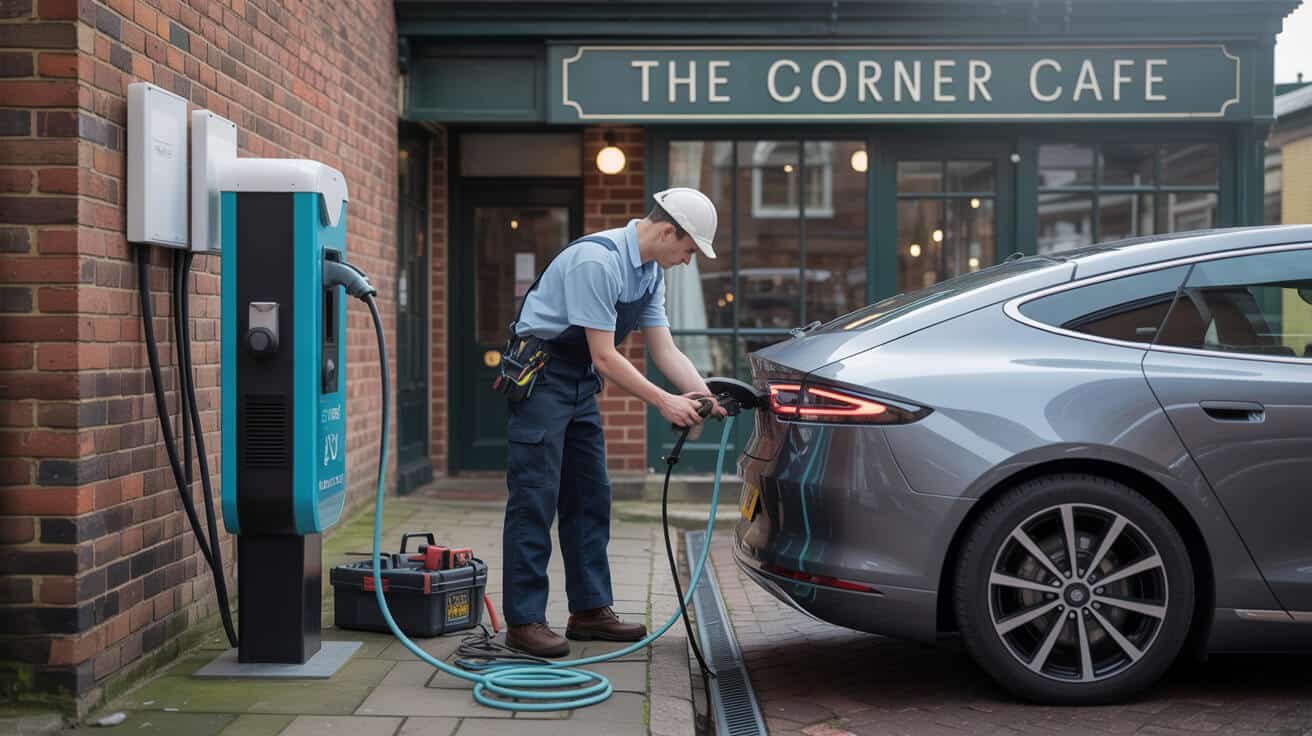
Is Your Rental Falling Behind? Why EV Chargers Could Be Your Next Decisive Asset
EV charging is no longer a “future upgrade”—it’s the new baseline for rental appeal. Over one million electric vehicles (EVs) now drive on UK roads, and that figure is projected to leap as company car schemes push EV adoption mainstream (nextgreencar.com). More renters are searching for properties that promise not just comfort but also eco-friendly, tech-forward convenience. If your rental doesn’t support at-home charging, it’s quietly sliding off the shortlist.
Properties without EV charging aren’t missing a feature—they’re missing the next generation of tenants.
“Green” has given way to convenience. Renters now rank EV charging alongside fast broadband and efficient heating. Ignore the shift, and your property faces longer voids, more deal-breaker questions, and faster decline in perceived value. With All Services 4U working directly with both major landlords and small property owners, we’re seeing it under the microscope: upgrades are no longer vanity—future-focused landlords gain the upper hand in both rent and retention.
EV Charging: The Real Value Shift
Think of EV charging as a trust signal for modern living. Tenants judge a property’s relevance by whether it matches their evolving needs. “No charger?” often means “No thanks”—and that’s a trend line rising, not fading.
Are Tenants Really Demanding EV Chargers—Or Is This Overblown?
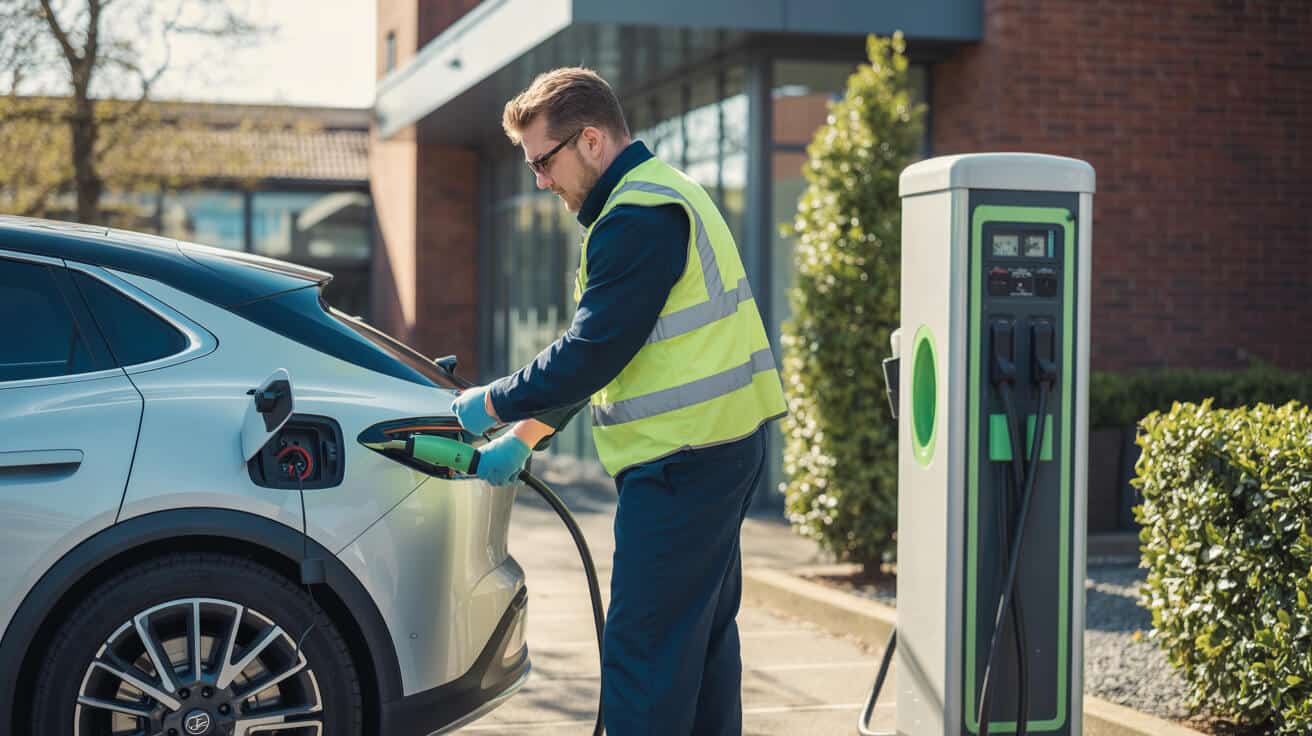
Today’s rental market tells a very clear storey: EV readiness is crossing age, income, and urban–rural divides faster than any other new amenity. Reports show that up to 80% of high-value tenants rate EV charging as essential as private parking or high-speed WiFi (Estate Agent Today). And this isn’t minor talk—incoming renters bring direct checklists and will walk away if you don’t meet them.
EV charging used to be a nice-to-have—now, it’s a must for both families and urban commuters.
Renters are asking sharper questions:
- Is every bay equipped, or just one?
- Can the cabling support future upgrades?
- Will I lose my spot if I buy electric next month?
If you still see this as a niche request, examine your viewing records. Flats with chargers command higher rents, lock in longer terms, and hit the preferred shortlist instantly. Those “my tenants don’t ask for it” arguments? They’ll change with the next tenancy. Applicants philtre rapidly, and proactive landlords are already seeing the benefit.
Why the Mindset Lag Cost Landlords
Hesitating on amenities is increasingly the death knell for fast lets. The eco trend is real, but practical convenience is what closes deals. EV chargers move properties up the results list—quickly.
Who Can Actually Claim EV Charger Grants—and What’s the Fine Print?
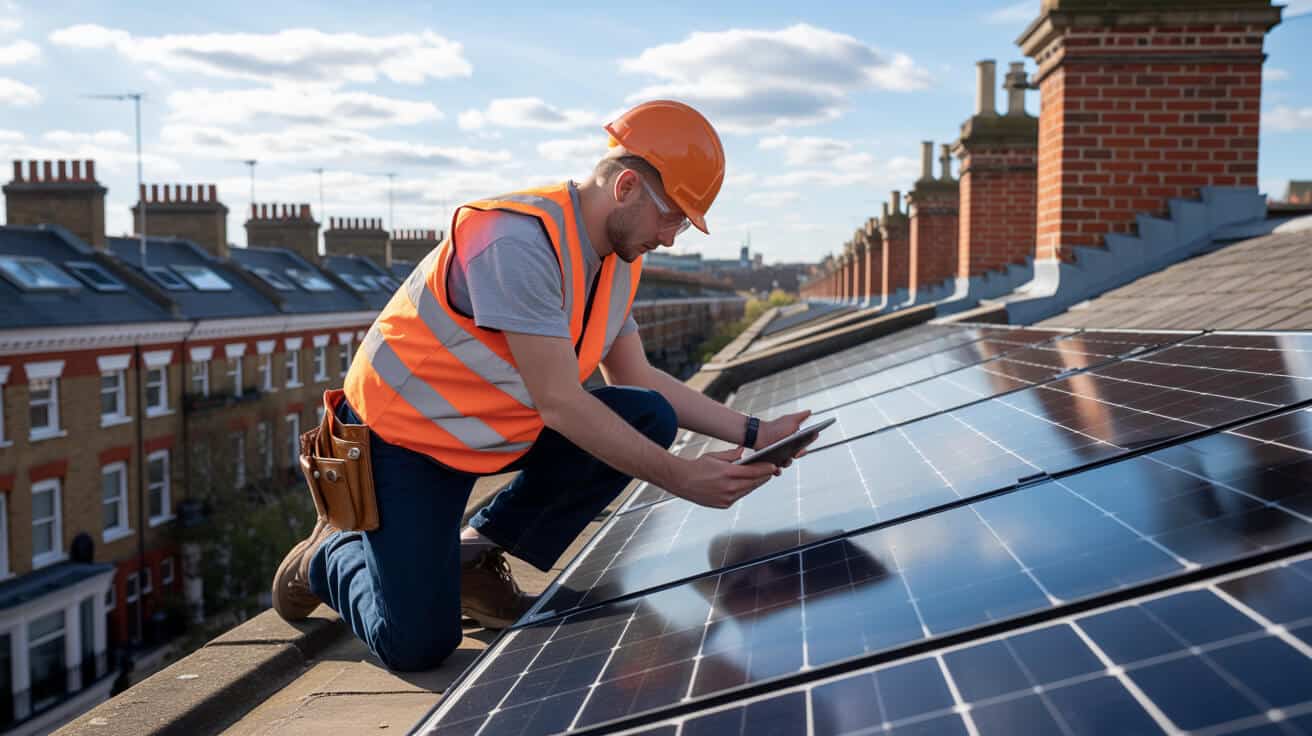
Landlords often think government grants are “for new builds only” or “not worth the hassle.” That’s flatly wrong. Whether you own a single flat or run a dozen blocks, you probably qualify for support (gov.uk). The devil is in the conditions—nothing insurmountable for a pro-active owner.
Who’s Eligible?
- Private landlords: —single homes, flats, conversions, even HMOs
- Block managers: covering new builds or converted properties
- Commercial landlords: with residential leases
Key Criteria
- Dedicated or assigned parking: linked to the tenancy (on- or off-street is acceptable if assigned)
- Ownership or documented permission: for the parking and installation site
- No restrictions: from local planning, managing agents, or covenants
Stop self-excluding: many landlords lose out on grants by wrongly assuming flats or leaseholds don’t qualify.
It usually takes five minutes and one call with a certified installer to check eligibility. Do this first—missed paperwork or guesswork here means lost time and money.
Landlord Grant Misconceptions
Don’t default to “grants are for big developers.” The application scope is broad and covers the majority of professional lets—if in doubt, ask.
What Will Landlords Really Spend to Instal an EV Charger?
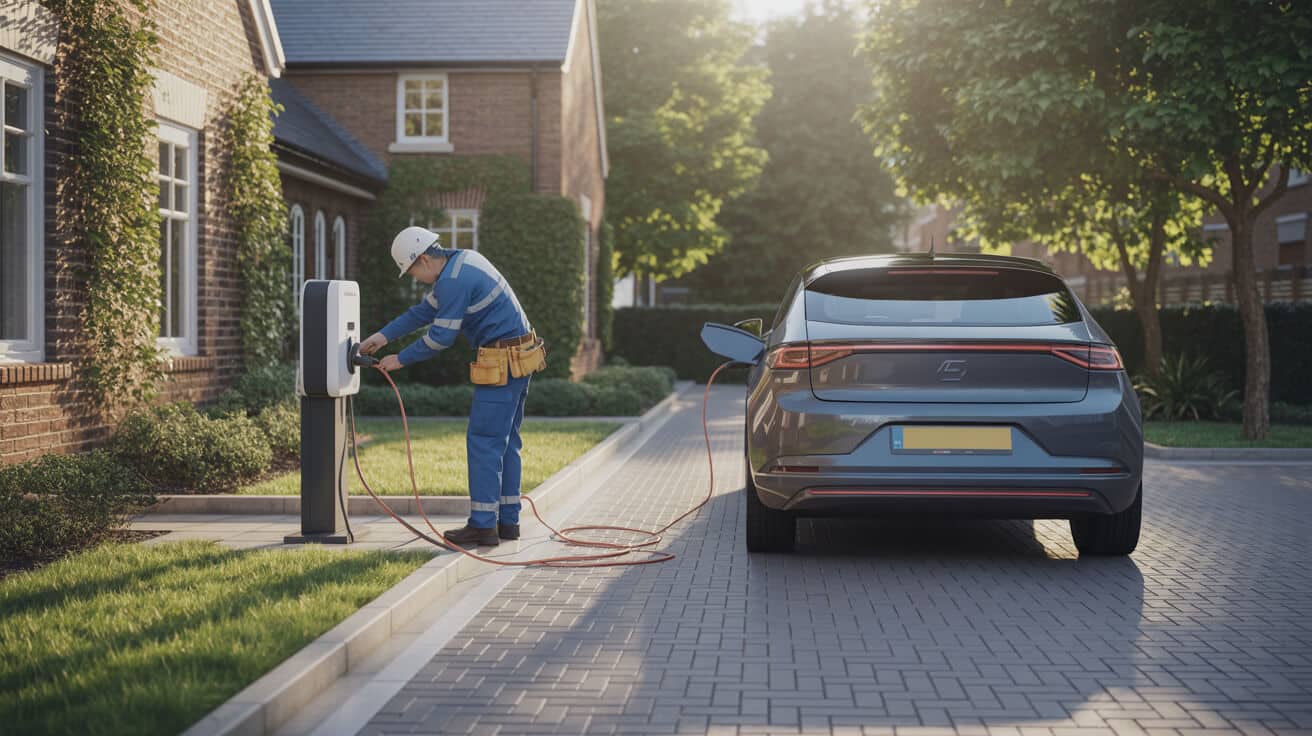
Let’s break down the cost with the numbers that matter. Installing a 7kW wall-mounted charger typically runs from £800 to £1,500 before grant relief (RCD Electrician). The spread comes from cable length, consumer unit upgrades, and property complexity (e.g., block parking vs. driveways). Civil works, long-distance cable runs, and steep power upgrades bump totals higher.
I’ll wait for prices to drop is a bet against a timed window—grant funds do run out and regulations only go forward.
Grant Savings Snapshot
| Scenario | Typical Spend | Grant Relief | Landlord Net Cost |
|---|---|---|---|
| Single Flat/House | £800–£1,500 | £350/charger | £450–£1,000 |
| Block of Flats | £5,000–£30,000+ | Up to 75% (£30,000 cap) | £1,250–£7,500+/block |
| Cable Upgrades | Varies | Covered via grant | 25% of total or less |
Explore installing alongside other upgrades (e.g., lighting, insulation) to save on labour and spread downtime. Bundling makes grant documentation easier and lessens disruption for sitting tenants.
Why Waiting Can Cost More
When regulations tighten, grant windows close. Retrofitting in a hurry, out-of-pocket, is the scenario every portfolio landlord dreads.
How Does the Grant Application Process Work—And Where Do Landlords Trip Up?
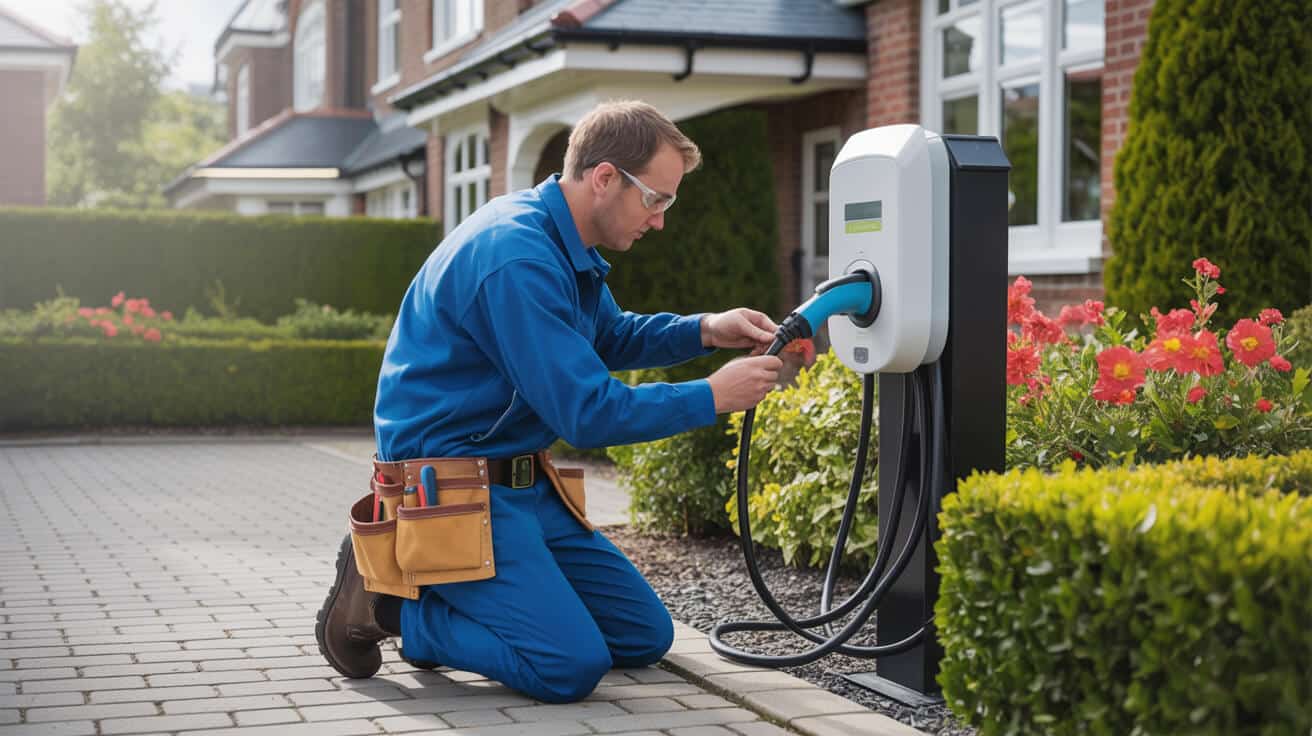
The main UK grant routes are:
- Chargepoint Grant: £350/champion, up to 200 chargers per year
- Infrastructure Grant: 75% funding, capped at £30,000 per building, covers “heavy-lift” works (cabling, prep) for blocks
Step-by-Step Playbook for Success
- Assess parking permissions. Nail down paperwork for assigned spots—never assume!
- Register the property online or via agent.
- Get grant pre-approval. Do not begin work before a green light.
- Choose an OZEV-accredited installer.
- Keep airtight documentation. Take photos, keep certificates, get explicit permission letters.
- Update tenant and insurance details following installation.
Grants lost to late applications or missing a single permission slip are every landlord’s cautionary tale.
Grant Application Checklist
| Step | Essential Task | Pro Tip/Warning |
|---|---|---|
| Check assigned parking | Secure relevant proof | Avoid “verbal only” rights |
| Register with gov portal | Set up _before_ any work | Partial info delays approval |
| Select installer | Confirm (OZEV) credentials | Cheapest ≠ compliant |
| Approval & signoff | Obtain _written_ grant OK | Don’t instal early! |
| Completion paperwork | Photos, EICR, permissions | Compile into shared folder |
Landlords who treat application as a part of the move-in planning—rather than mid-lease patchwork—get the highest approval rates.
What Compliance, Legal, or Safety Standards Apply to Installing EV Chargers?
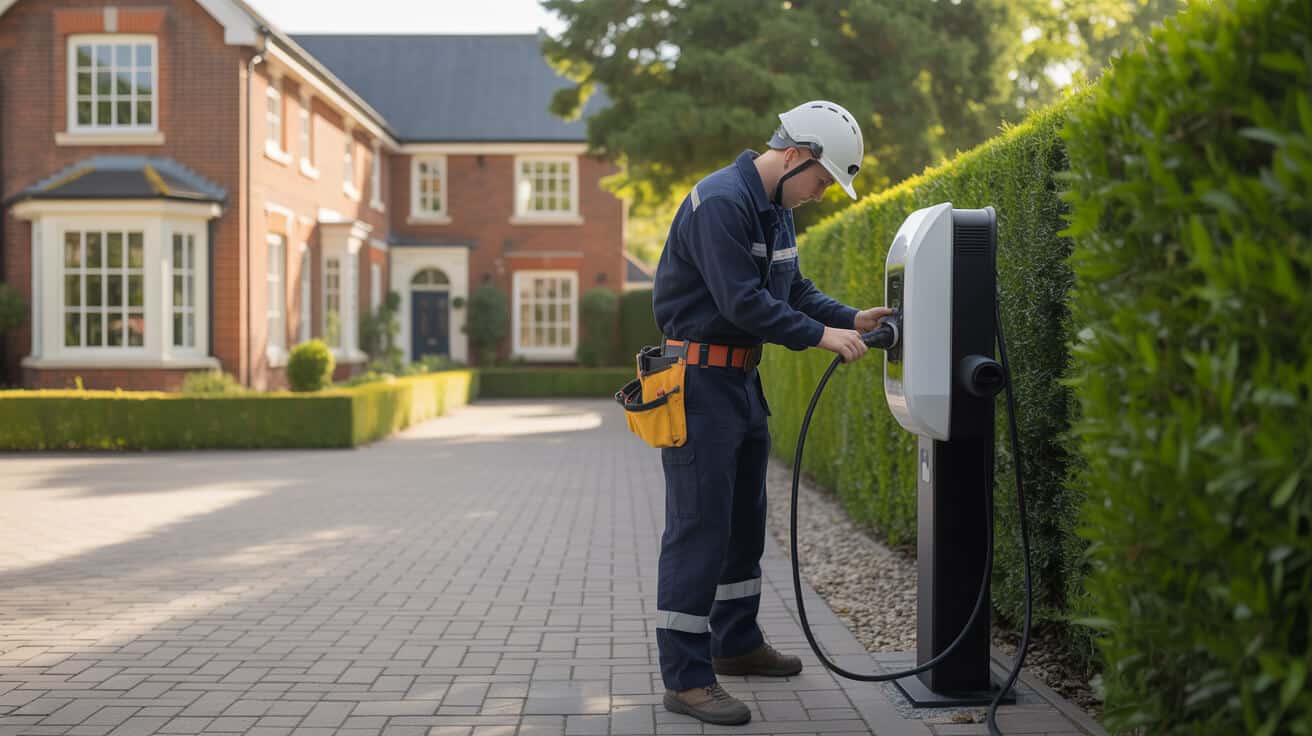
Miss compliance, and the best-case scenario is nullified insurance; the worst is legal liability. Every installation must follow BS7671, be Part P compliant where domestic, and performed by an OZEV-certified technician (gov.uk). Documentation isn’t window-dressing—it’s a precondition for letting agents, insurers, and grant success.
Tenants, agents, and insurers all have the power to reject properties that fudge compliance on electrics or permissions.
What Proper Installation Requires
- Upfront permissions: from leaseholders, agents, and (for blocks) resident associations
- Full certification: —EICR, installation report, grant acceptance letter
- Photographic proof: —the more, the better
Neglecting paperwork locks out insurer coverage and has led to recent property management disputes. Upcoming “EV readiness” regulations will likely toughen these rules, so lead now or risk expensive retrofits.
What’s the Actual Installation Process—From Tenant Request to Final Signoff?
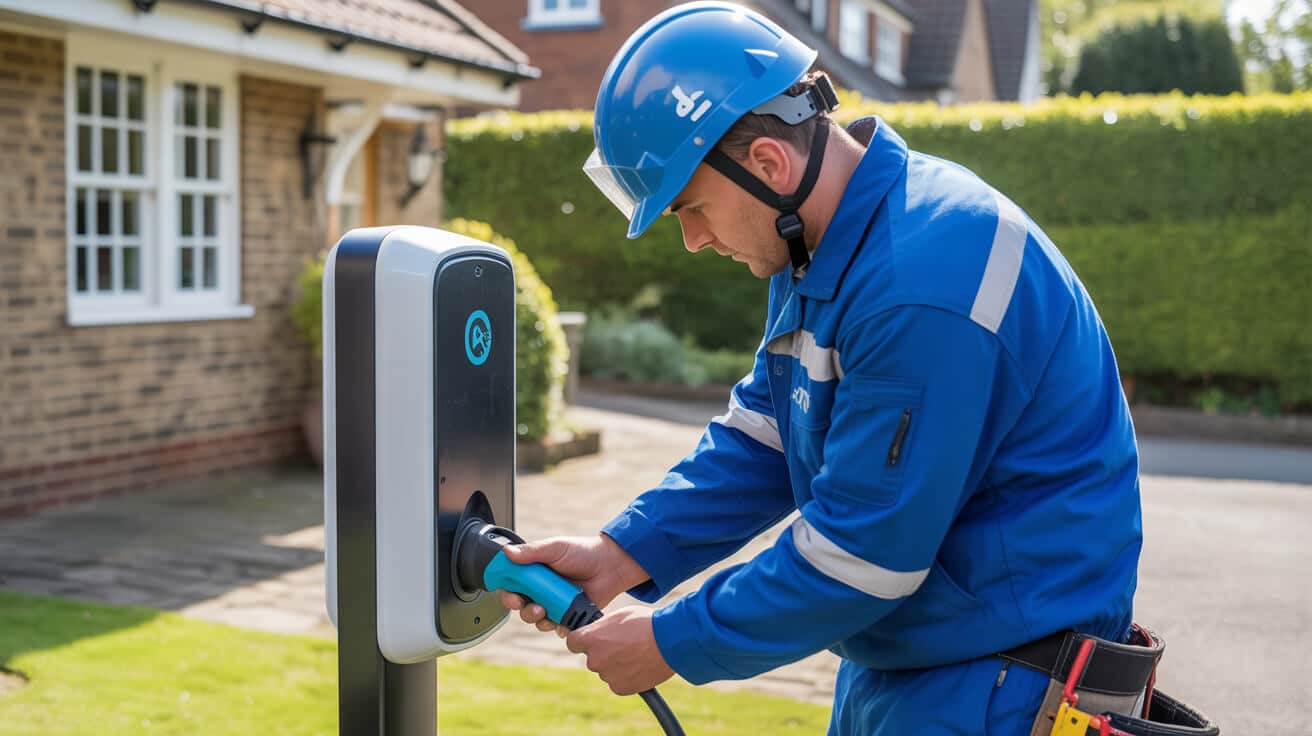
Landlords who act on trends—not complaints—set the benchmark. Don’t wait for tenant requests to pile up; pre-empt by staying ahead.
The End-to-End Flow
- Survey demand: Poll existing tenants and monitor new queries.
- Verify permissions: Check lease status, block manager OK, and title plan for parking assignments.
- Apply for grant: Register property, get written approvals, choose installer.
- Qualified installation: Always OZEV-accredited, to code.
- Close the loop: Capture all documentation, update tenancy & insurance, supply user guides.
A block in Manchester cut its average voids by 30% by rolling out building-wide chargers, while grant support accelerated agent and insurer approval. This isn’t theory—it’s a proven boost to rental resilience.
Documentation Sets You Apart
Deliver user guides and a PDF pack to tenants and letting agents. It’s the fastest way to show your rental’s “tech-first” approach isn’t just surface.
Where Do Most Landlords Slip Up—and How Can You Avoid Their Mistakes?
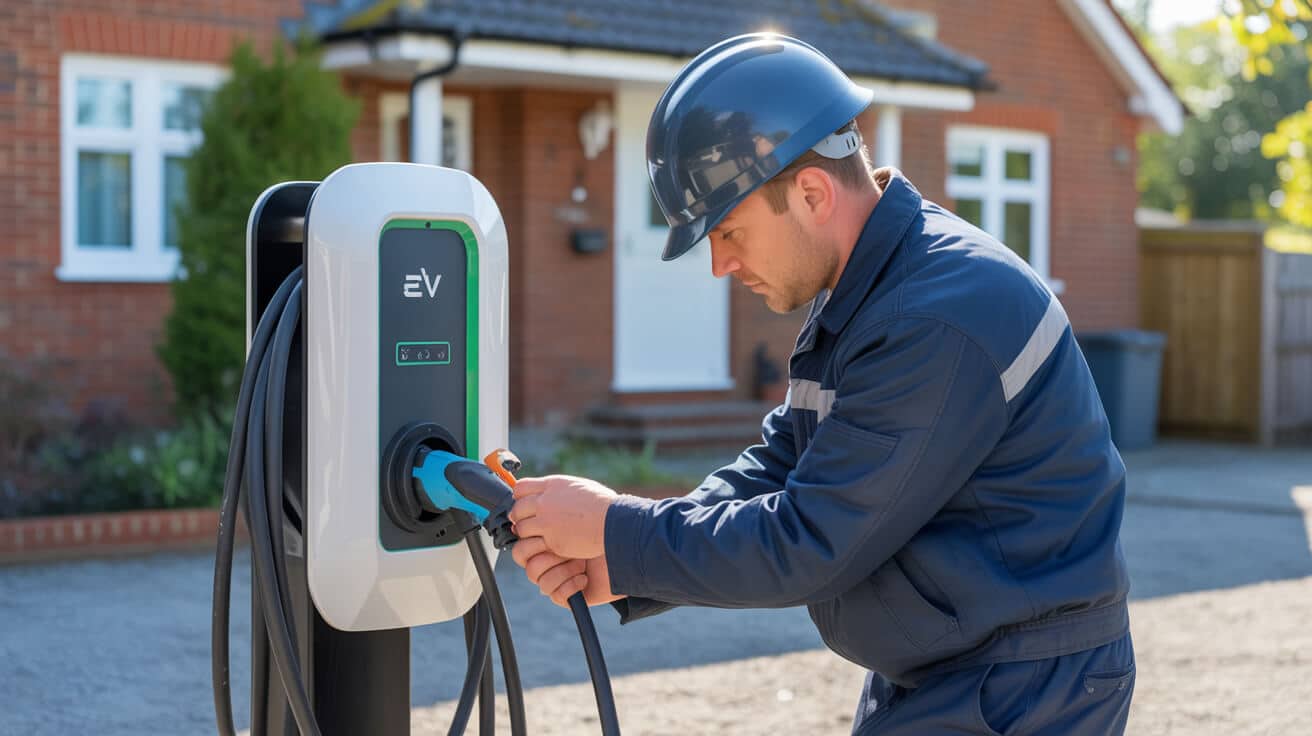
Missed opportunities aren’t random—they’re documented failures.
The top errors?
- Skipping explicit permission: If you don’t own the freehold or your block is managed, written consent is mandatory.
- Delay in grant application: Instal first, apply later = no funding.
- Contracting the cheapest installer: Only an OZEV-registered technician ensures compliance and grant protection.
- Messy documentation: Save every piece, from photo evidence to safety certificates, in an online folder.
- Not alerting insurers/agents: Let your stakeholders know up front—no surprises during claims or tenancy switches.
Real diligence isn’t bureaucratic—it’s the fastest route to painless letting and maximum asset value.
Landlord Failure Table
| Mistake | Fix | When |
|---|---|---|
| Missed permissions | Written sign-off for alterations | At planning |
| Late grant process | Begin paperwork first | Before work |
| Wrong installer | OZEV only—never just on price | At selection |
| Lost paperwork | Digital copies in secure folder | Always |
| Asset misalignment | Inform insurers and agents now | End-phase |
Compliance is reputation; the better your process, the greater your long-term asset protection.
How Does EV Charger Installation Add Value Over the Long Term?
Your rental’s relevance tomorrow rests on decisions you make today.
- Premium tenants: Those who plan long-term living won’t compromise on core amenities.
- Lower voids: Charging-equipped homes see higher retention and command better rates.
- Compliance insulation: Early adopters bank grants; latecomers pay full price under stricter standards.
All Services 4U bridges each step. From eligibility survey to grant application, from certified installation to digital closeout packs, we guide landlords through every hurdle. Our approach is clear, compliant, and always tailored.
- Eligibility audit: We tell you straight away if your site and paperwork pass.
- Full audit trail: Documents kept, shared, and retrievable years later.
- Agent/insurer support: We pre-build the compliance path for future letting or incident claims.
The fastest way to protect your asset is to future-proof it before the gates close. The window on grants will shut as adoption spreads.
Book Your EV Charger Survey With All Services 4U
Don’t let market trends become market threats. All Services 4U delivers managed, grant-integrated charger installations that keep your rental ahead, not scrambling to catch up. Our service is not just about fitting hardware—it’s about securing tenant satisfaction, compliance, and future value in one straightforward sweep.
Take the proactive step now—book your EV charger survey and put your property’s value on the front foot. All Services 4U is ready with the guidance and expertise you need to turn today’s upgrades into tomorrow’s competitive edge.
Frequently Asked Questions
What unique legal and insurance demands must UK landlords meet for EV charger installation in 2024 and beyond?
UK landlords now operate under a “prove it or lose it” regime when fitting EV chargers: the law and insurance industry expect not only safe installation but airtight documentation. Under Building Regulations Part S and government tenancy reforms, new builds must enable EV readiness, while even existing properties face rising pressure to accept charger requests unless substantive risk blocks them. The insurance sector has closed loopholes: claims are denied if tenants instal without recorded permissions, non-OZEV fitters are used, or no BS7671 certificate is held. Local authority and block management permission trails matter for every installation—even when “just” updating a driveway. Increasingly, insurance brokers will ask for photographic proof, EICR updates, and paper trails before renewal.
It’s the paper not the plastic—one missing letter can mean a denied claim even if the instal itself is flawless.
What new scenarios force landlords to update their risk approach?
- Tenants now cite the Renters Reform Bill to demand permission for chargers; refusing without substantive, evidence-based reason (e.g., fire safety, listed status, parking right) can trigger tribunal review.
- Most boroughs and insurance assessors want digital, not oral, consent chains—including from block managers and leaseholders.
- Emergency callouts (like overcurrent trips) are closely scrutinised for compliance failings—avoidable delays cost hundreds in denied claims or renewal hikes.
How are professional landlord services changing their compliance workflow?
Streamlined workflows now mean:
- Standard forms for every permission
- Tracking charger details on asset registers
- Annual check-ups tied to tenancy or EICR reviews
All Services 4U and similar platforms increasingly offer bundled compliance packages, cutting admin stress for portfolio owners.
How can precise planning slash the total cost of EV charger installation for landlords?
Landlords installing EV chargers in 2024 routinely pay £400–£900 post-grant for a standard instal, but the real cost levers are hidden in the preparatory phase. Unexpected charges often come from:
- Delays in obtaining permission (costing the grant window)
- Needing additional consumer units in older homes
- Complex groundworks for communal drives or blocks
Grant funding operates on a depletion basis—with spring 2024’s grant pots running empty by summer in several boroughs. When landlords “rush and retrofit” after tenant pressure or regulatory deadlines, costs can double overnight and grant eligibility evaporates. Proactive multi-unit planning, bulk procurement of OZEV-approved kit, and a single end-to-end installer (like All Services 4U) cut total spend 30–40% on average in block or portfolio upgrades.
The hidden cost is always in last-minute instals, broken documentation chains, or phased upgrades—plan, document, and you win twice.
Are there overlooked savings when landlords bundle other upgrades?
- Combining charger instals with EICR rewiring, LED retrofits, or driveway works yields significant discounts on trades and compliance admin.
- “Do it once, claim all grants, digitalise every approval.” This approach is proven to secure up to £2,000 in additional grant or insurance premium reductions per property in multi-unit blocks.
Does current tenant demand really justify the investment?
Right now, regions within 10 miles of major EV corridors (M25, M40, Manchester ring) see up to 25% higher tenant retention and 10–14% rent uplifts in “EV-prepped” homes, according to Property Industry Eye (2024).
What step-by-step process secures grants and approvals for landlord EV charger instals—without admin headaches?
Maximising grant success hinges on timing and full documentation. The step-by-step workflow:
1. Survey—Map parking rights, property status, and leaseholder or freeholder permissions.
2. Consent—Obtain all written approvals before works begin.
3. Register—Apply via .gov portal, attaching permission and parking evidence.
4. Qualify—Use only OZEV-accredited installers; ensure works are BS7671-certified and captured on the EICR.
5. Compile—Maintain a digital file (photos, permissions, installer certs, insurer updates, inventory insert).
6. Complete—Submit grant claim, keep record for 5+ years.
Missing any single step or rushing ahead without written approval is the leading cause of grant rejections or insurance denials.
Every 2024 grant query we get is triggered by a missing consent letter or tenancy mismatch—only paperwork, never hardware, blocks funding.
How do pro services like All Services 4U streamline this process?
- Automated consent chase-up, standard forms, and booking with pre-vetted OZEV fitters remove 80% of admin load.
- Built-in triggers to update insurance and tenancy docs as part of the workflow.
Can all landlords, including leasehold or HMO, benefit from both main grant schemes?
Yes—so long as designated parking and permissions are proven, multi-unit and HMO landlords can combine both the EV Chargepoint Grant and Infrastructure Grant annually. Aggregating upgrades unlocks higher total funding pots.
How do EV charger upgrades actively futureproof rental yields, tenant quality, and asset resilience?
A compliant, well-documented EV charger isn’t just a perk—it’s a long-term differentiator. Data from Rightmove and RICS shows that by Q2 2024:
- Homes with up-to-date charger certification averaged 15% higher rent uplift and over 30 days less average vacancy versus non-upgraded stock
- Properties listed as “premium green” (EPC B or better and EV-ready) stood out in crowded markets, fetching up to £5,000 higher sale prices in tier-one towns
Tenants with longer lease intentions (companies, professionals) now shortlist only those homes with clarity on both charger use and associated liabilities, leveraging landlord transparency as a trust factor. “Plug-and-go” rental is cited as a “dealbreaker” by 28% of renters aged under 45 (Zoopla 2024).
If your home isn’t equipped and documented, you’re already invisible to the fastest-growing pool of tenants.
Which value factors matter most at renewal or resale?
- Current grant-backed charger certification: —Proof of grant can be transferred on sale and provides legal bounce.
- EICR & insurance documentation: —Buyers and letting agents look for this to avoid future headaches.
- Proof of tenant education: —Listing charger guides and operational documents boosts conversion by up to 20% (letting agent survey, Shelta 2024).
How does early adoption sidestep regulatory risk?
New rules are phased, but top boroughs are already issuing compliance checks and rebate deadlines. Properties meeting standards preemptively avoid last-minute retrofits, higher insurance premiums, and rushed admin at point-of-sale.
What are the unseen hurdles and real-world admin traps in landlord EV charger applications?
Landlords most frequently stumble at the paperwork, not the technology. Top barriers:
- Leases with shared or ambiguous parking wording (especially in older maisonettes and blocks)
- Stalled or missing communication with block managers or freeholders—two-week lags can torpedo grant windows
- Overreliance on oral consents or email threads that aren’t signable; only signed, dated documents pass audits
- Failing to update insurer or letting agent, leading to complications at renewal or claim
Digitising every permission, matching grant application details to tenancy records, and storing proof with tenancy files stops repeat errors.
Your next tenant or insurer won’t accept ‘We had a call about it’—if it can’t be shown on demand, it won’t be honoured.
What pre-emptive habits prevent these risks?
- Use a single digital folder (cloud-based)—not scattered files across email or WhatsApp
- Tag and save all permissions, instal photos, and charger compliance docs to tenancy records and grant application
- Build a reminder into your calendar two months before tenancy renewal to review charger permission status
What agency support can landlords expect?
Professional services provide end-to-end form-filling, permission gathering, and direct landlord-insurer liaison, ensuring that all “invisible” tripwires—like lapsed consents on lease renewal—are caught early.
How can landlords systematise compliance to defend yield, avoid disputes, and lead on green tenancy standards?
Turn compliance into a repeatable workflow rather than an event:
- Integrate grant and charger checks with tenant onboarding—make eligibility, documentation, and permission a checklist step
- Book annual charger and compliance checks in line with your EICR or scheduled maintenance
- Refresh tenancy agreements, property inventory, and insurance declarations every time a charger is fitted, replaced, or upgraded
- Use digital tools for photo, doc, and schedule storage; automated notifications help
- Lean on experienced installer-managers like All Services 4U for entire “paper trail” handling
Regulatory and insurance systems now move too fast for DIY memory. Treat EV charger admin like you would boiler gas safety—automate, document, delegate what you can.
How does this process enhance long-term ROI?
- Higher tenant retention and attraction: —streamlined compliance gives premium, eco-conscious tenants confidence to stay
- Reduced retroactive costs: —each admin misstep avoided can save up to £2,000 in fines, clawbacks, or lost rent
- Market readiness: —demonstrating process leadership positions your properties for above-market rates and resale
What is the final call to action for 2024–25 landlords?
Systematise documentation now, align with upcoming standards, and collaborate with expert compliance partners. Compliance confidence isn’t just peace of mind—it’s your new growth engine.



